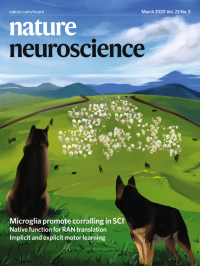- EN - English
- CN - 中文
Visual-looming Shadow Task with in-vivo Calcium Activity Monitoring to Assess Defensive Behaviors in Mice
视觉变化阴影任务结合体内钙离子活性监测评估小鼠防御行为
发布: 2020年11月20日第10卷第22期 DOI: 10.21769/BioProtoc.3826 浏览次数: 4354
评审: Arnau Busquets-GarciaEdgar Soria-GomezHSIU CHUN CHUANG
Abstract
There has been a clear movement in recent years towards the adoption of more naturalistic experimental regimes for the study of behavior and its underlying neural architecture. Here we provide a protocol that allows experimenters working with mice, to mimic a looming and advancing predatory threat from the sky. This approach is easy to implement and can be combined with sophisticated neural recordings that allow access to real-time activity during behavior. This approach offers another option in a battery of tests that allow for a more comprehensive understanding of defensive behaviors.
Keywords: Defensive behaviors (防御行为)Background
How the brain processes danger and then reacts to it has been studied extensively. Recently there has been a shift towards using more ethologically relevant behaviors. This emerging field of “neuroethology” combines behavioral information in tasks that are relevant to the species with real-time recordings of neural activity data from specific cell populations in the brain.
In the late 1980’s, Blanchard et al. proposed a fear taxonomy (Blanchard et al., 1986), in which they contemplated the idea that responses to fear were coordinated in an organized fashion that balanced threat with opportunity. Those studies provided direct evidence that variables such as predator proximity or escape opportunities influence how an individual behaves in response to a putative threat. For example, changes in the distance between a predator and prey, known as a change in threat imminence, initiate changes in the behavior of the prey. Specifically, the prey might exhibit a passive response to avoid detection when the predator is distant, but rapidly transition to flight mode to avoid capture as the predator approaches.
More recently, investigators have explored experimental approaches that are more naturalistic both in terms of the stimuli that are presented and in the opportunities an animal has to execute an action. An intriguing approach, that relies exclusively on visual stimulation to elicit innate fear responses, has been developed for rodents. Pioneered by Yilmaz and Meister (Yilmaz and Meister, 2013), it uses a dark visual stimulus that looms overhead and then increases in size, mimicking the rapid advance of a flying predator. This was paired with a rudimentary shelter in an open arena, thus providing mice an opportunity to find safety. Under these conditions, when exposed to an expanding disk overhead, mice engage in one of two different strategies: they either show a decrease in motor activity (freezing) or they initiate an escape response that targets the shelter. The probability of executing a given behavior is strongly dependent on the various aspects of the experimental parameters.
While many protocols for eliciting a fear response are species specific, the looming visual stimulus can be used across multiple species. Without having to change the physical characteristics of the stimulus, a looming and advancing black disk elicits innate defensive responses from zebra-fish (De Marco et al., 2016) to humans (Mobbs et al., 2007) and, as shown in this protocol, in mice (Evans et al., 2018 ; Daviu et al., 2020). This protocol is highly reproducible and also allows for the simultaneous acquisition of neural activity using single fiber photometry (Daviu et al., 2020) or single-cell data using head-mounted, miniature endoscopes. This new methodological approach may help advance translational knowledge about how different species compute threats and execute innate defensive behaviors.
Materials and Reagents
Looming Shadow task
Plastic transparent or white arena (41 cm x 19 cm x 20.5 cm)
Shelter (13 cm x 12 cm x 10 cm)
Poster board (Staples, catalog number: 28128 )
White Monochrome arena background (optional, 41 cm x 19 cm x 20.5 cm)
LCD monitor down (Dell UltraSharp 1908FP, 19-inch) and a frame (8020 Inc, Columbia city, USA. Profile 1010, fastening 2811, monitor holder corner Gusset 4332) to hold it above the arena facing down
Stimulus (video)
Ethyl Alcohol 70% v/v
Experimental subject: Mice (this protocol was developed using C57BL/6-Elite and Crh-IRES-Cre;Ai14 mice)
Single Fiber Photometry
400-µm diameter mono fiber optic cannula 2.5 mm diameter and 0.48 NA (Doric Lenses, Quebec, Canada. MFC_400/430/0.48_5mm_MF2.5_FLT)
Fiber optic patch chord 1.5 m or longer and 0.48 NA (Doric Lenses, Quebec, Canada. DORIC MFP_400/460/900-0.48_2m_FC/MF2.5)
Zirconia sleeve 2.5 mm diameter to connect the fiber optic patch chord with the cannula (Doric Lenses, Quebec, Canada. DORIC SLEEVE_ZR_2.5)
Equipment
Windows PC
Fiber Photometry system Doric Lenses, Quebec, Canada
Two excitation LEDs 465 nm and 405 nm (Doric Lenses)
LED driver, Doric minicube filter set (FMC4_AE(405)_E(460-490)_F(500-550)_S)
Photoreceiver (NewPort, model 2151 )
Power meter (ThorLabs, Newton, NY, USA PM100D)
Video camera connected and synchronized with the fiber photometry system (Doric Lenses, Quebec, Canada. BTC_USB3.0_CO)
If a simultaneous recording of calcium transients is not performed, any camera that can visualize the entire cage can be used for this protocol.
Tripod
Software
Doric Neuroscience Studio v5.4.1 (Doric Lenses, Quebec, Canada)
Windows media player classic 6.4
Python
Windows Game recorder
MATLAB R2018a (Math Works)
ImageJ
GraphPad Prism 8.0
Procedure
文章信息
版权信息
© 2020 The Authors; exclusive licensee Bio-protocol LLC.
如何引用
Daviu, N., Fuzesi, T., Rosenegger, D., Peringod, G., Simone, K. and Bains, J. (2020). Visual-looming Shadow Task with in-vivo Calcium Activity Monitoring to Assess Defensive Behaviors in Mice. Bio-protocol 10(22): e3826. DOI: 10.21769/BioProtoc.3826.
分类
神经科学 > 行为神经科学
您对这篇实验方法有问题吗?
在此处发布您的问题,我们将邀请本文作者来回答。同时,我们会将您的问题发布到Bio-protocol Exchange,以便寻求社区成员的帮助。
Share
Bluesky
X
Copy link









